| Name | Trojan-Ransom.NSIS.ONION.air |
| Type | Trojan, Ransomware |
| Short Description | A file-encrypting threat, that encrypts the user’s files and ask for payment to decrypt them via unique key. |
| Symptoms | Files are encrypted and a ransom message is displayed. |
| Distribution Method | Via Exploit Kits, network vulnerabilities, spam emails, etc. |
| Detection tool | Download SpyHunter, to See If Your System Has Been Affected By Trojan-Ransom.NSIS.ONION.air |
| Data Recovery Tool | Windows Data Recovery by Stellar Phoenix Notice! This product scans your drive sectors to recover lost files and it may not recover 100% of the encrypted files, but only few of them, depending on the situation and whether or not you have reformatted your drive. |
Ransomware doesn’t sleep and we have a new file encrypting threat on the malware horizon to prove it. Actually, the Trojan ransomware that has just been detected is considered a new variant of the Onion Ransomware (Trojan-Ransom.Win32.Onion) also known as CTB-Locker or Citroni. Ransomware pieces are being redesigned as we speak and there are many cases of CryptoWall and CryptoLocker copycats. Sophisticated and not-so-crafted ransom malware is being sold on the black market. Why? Ransomware and online money theft have proven to be effective methods for quick and easy gain.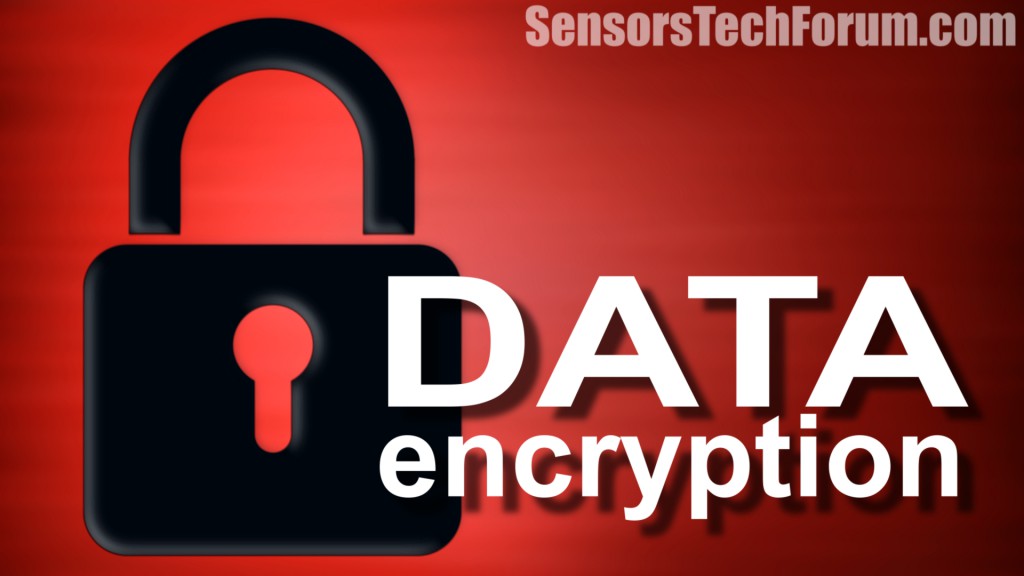
The message displayed by the new version of the Onion Ransomware (a.k.a. Trojan-Ransom.NSIS.ONION.air) is:
→MW_ IN FILES.txt or KK_ IN YOUR DOCUMENTS.txt
The ransom message within .txt file contains the following information:
→Good day. Your computer has been locked by ransomware, your personal files are encrypted and you have unfortunately “lost” all your pictures,
files and documents on the computer. Your important files encryption produced on this computer: videos, photos, documents, etc.
Encryption was produced using unique public key RSA-1024 generated for this computer. To decrypt files you need to obtain the private key.
All encrypted files contain MW_
Your number: [edited]
To obtain the program for this computer, which will decrypt all files, you need to pay
3 bitcoins on our bitcoin address [edited] (today 1 bitcoin was 260 USA dollars). Only we and you know about this bitcoin address.
You can check bitcoin balanse here – https://www.blockchain.info/address/[edited]
After payment send us your number on our mail ttk@ruggedinbox.com and we will send you decryption tool (you need only run it and all files will be decrypted during 1…3 hours)
Before payment you can send us one small file (100..500 kilobytes) and we will decrypt it – it’s your garantee that we have decryption tool. And send us your number with attached file
We dont know who are you. All what we need – it’s some money.
Don’t panic if we don’t answer you during 24 hours. It means that we didn’t received your letter (for example if you use hotmail.com or outlook.com
it can block letter, SO DON’T USE HOTMAIL.COM AND OUTLOOK.COM. You need register your mail account in www.ruggedinbox.com (it will takes 1..2 minutes) and write us again)
You can use one of that bitcoin exchangers for transfering bitcoin.
Trojan-Ransom.NSIS.ONION.air Technical Resume
As already mentioned, the MW_ IN FILES.txt or KK_ IN YOUR DOCUMENTS.txt message is distributed via a new variant of the Onion Ransomware – Trojan-Ransom.NSIS.ONION.air. The malicious piece is encrypting files via the RSA-1024 encryption key. Once the encryption process has finished, the cyber criminals will ask for a payment of 3 bitcoins to decrypt the files with the unique decryption key. As of the time the ransom message was created, 1 bitcoin was about $260.
Interestingly enough, according to users’ posts on BleepingComputer, a decryption key was provided after 1 bitcoin was paid. It won’t be the first time crooks deliver the deciphering tool without the whole ransom amount being transferred.
Onion Ransomware Technical Details
Onion Ransomware is also dubbed CTB-Locker and Citroni. Since CTB-Locker has been quite active in 2015, a lot of information has been gathered about its ways. For instance, it is known that Critoni Ransomware has the same features as other ransom Trojans. CTB-Locker makes randomly selected files unreadable. In most cases, a .TXT file contains the instructions for the Bitcoin-based payment required for the decryption of the user’s files. Such malware often exploits network vulnerabilities and can be spread with the help of Exploit Kits. Spam-email messages are one of the common ways to infect a system.
The latest version of the Onion ransom is most likely not that different, compared to its malicious predecessors. However, Trojans are famous for acting as backdoors on affected system which means that more malicious software can enter any time. A scan report indicates that Trojan-Ransom.NSIS.ONION.air may be accompanied by other Trojans and exploiting tools:
- Not-a-virus:NetTool.Win32.Wasppace.I
- Trojan.Win32.Fsysna/.ccym
- Backdoor.Win32.Hlux.dca
- HEUR:Trojan.Win32.Generic
Image Source: BleepingComputer
Keep in mind that the ‘infection’ described above may be true for one particular system only.
Trojan-Ransom.NSIS.ONION.air Removal Instructions
Trojan-Ransom.NSIS.ONION.air may be residing in any of the following directories:
- %Temp%
- C:\
\ .exe - %AppData%
- %LocalAppData%
- %ProgramData%
- %WinDir%
The listed locations are often used by malicious executables related to aggressive rasomware attacks.
An anti-malware solution will detect and delete the threat. However, file decryption can happen only when the decryption key is obtained. On the grounds of Kaspersky Lab vast research on the Onion family , files can be decrypted only with the master-private key.
What is even worse is that there have been cases when not only the files located on the system were encrypted but the backup copies as well.
Additionaly, what we can suggest to you, our readers, is educate yourselves about how ransomware works. To do that, feel free to refer to the following articles:
Restore Files Encrypted by Ransomware Manually
To remove Trojan-Ransom.NSIS.ONION.air, scan the system. To preserve your files, you may want to use an external storage device, since newly-crafted ransomware may be capable of affecting back-up copies as well.

Spy Hunter scanner will only detect the threat. If you want the threat to be automatically removed, you need to purchase the full version of the anti-malware tool.Find Out More About SpyHunter Anti-Malware Tool / How to Uninstall SpyHunter
- Step 1
- Step 2
- Step 3
- Step 4
- Step 5
Step 1: Scan for Trojan-Ransom.NSIS.ONION.air with SpyHunter Anti-Malware Tool
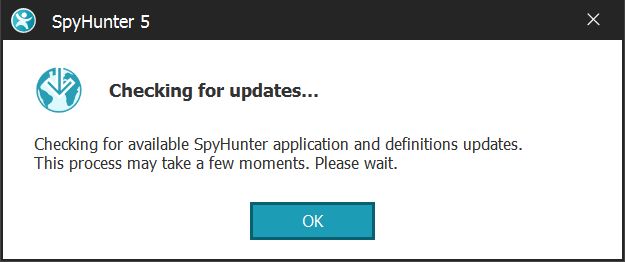
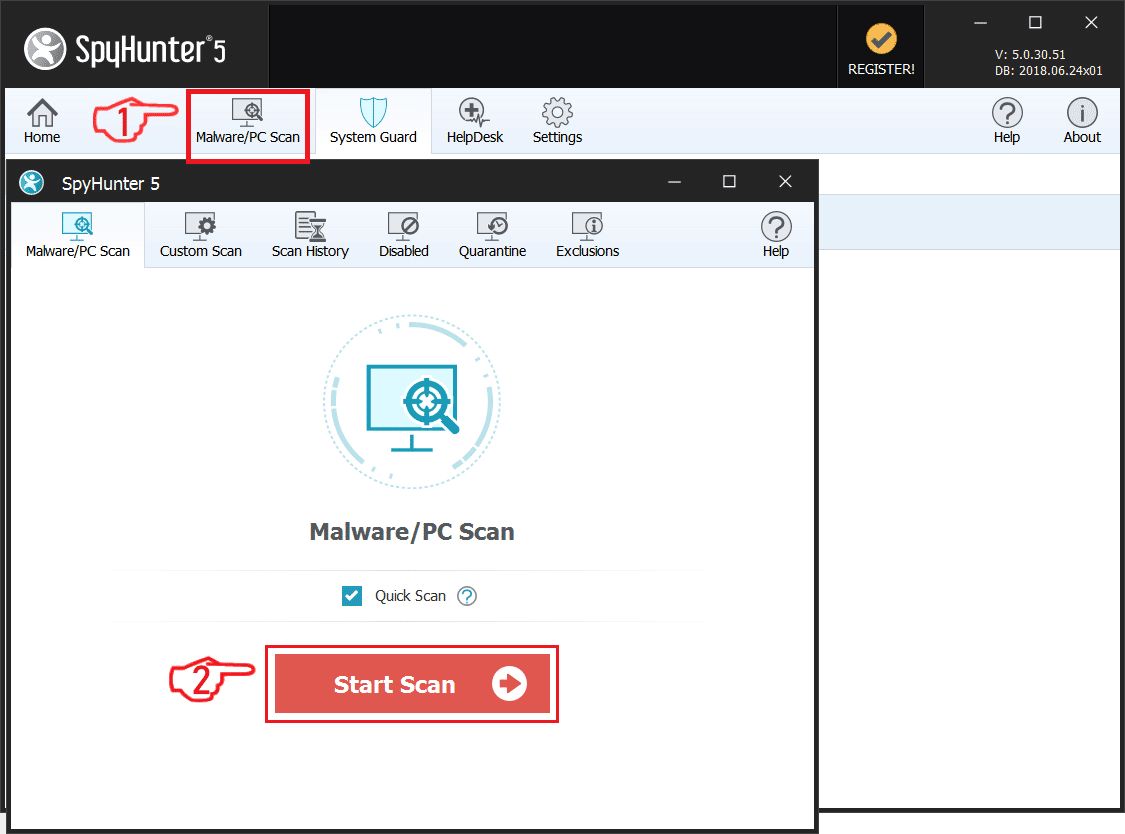
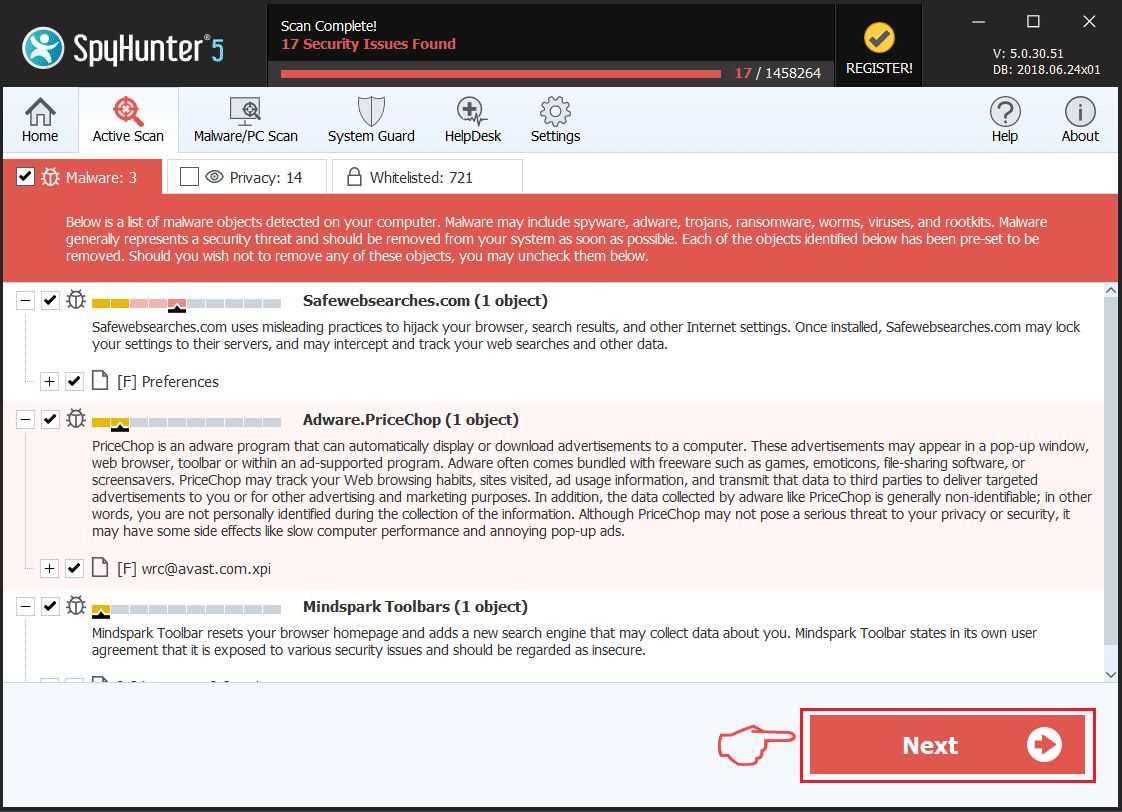
Ransomware Automatic Removal - Video Guide
Step 2: Uninstall Trojan-Ransom.NSIS.ONION.air and related malware from Windows
Here is a method in few easy steps that should be able to uninstall most programs. No matter if you are using Windows 10, 8, 7, Vista or XP, those steps will get the job done. Dragging the program or its folder to the recycle bin can be a very bad decision. If you do that, bits and pieces of the program are left behind, and that can lead to unstable work of your PC, errors with the file type associations and other unpleasant activities. The proper way to get a program off your computer is to Uninstall it. To do that:

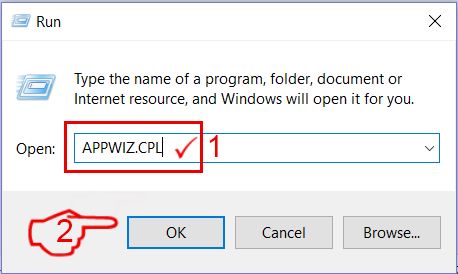
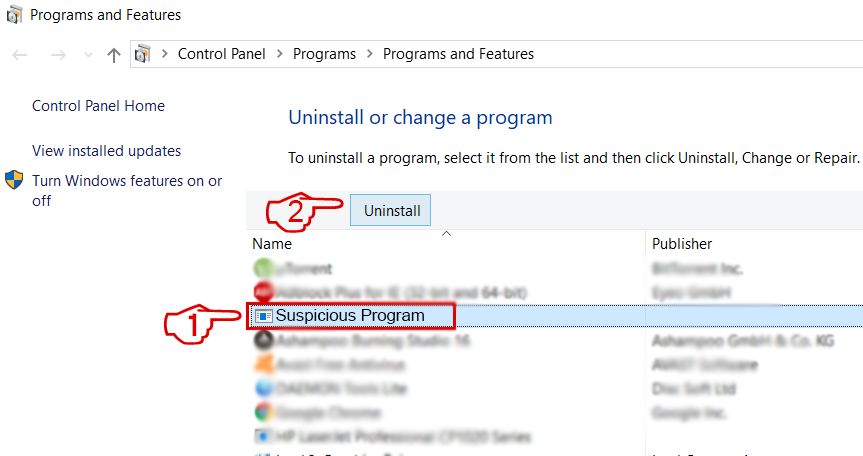 Follow the instructions above and you will successfully delete most unwanted and malicious programs.
Follow the instructions above and you will successfully delete most unwanted and malicious programs.
Step 3: Clean any registries, created by Trojan-Ransom.NSIS.ONION.air on your computer.
The usually targeted registries of Windows machines are the following:
- HKEY_LOCAL_MACHINE\Software\Microsoft\Windows\CurrentVersion\Run
- HKEY_CURRENT_USER\Software\Microsoft\Windows\CurrentVersion\Run
- HKEY_LOCAL_MACHINE\Software\Microsoft\Windows\CurrentVersion\RunOnce
- HKEY_CURRENT_USER\Software\Microsoft\Windows\CurrentVersion\RunOnce
You can access them by opening the Windows registry editor and deleting any values, created by Trojan-Ransom.NSIS.ONION.air there. This can happen by following the steps underneath:
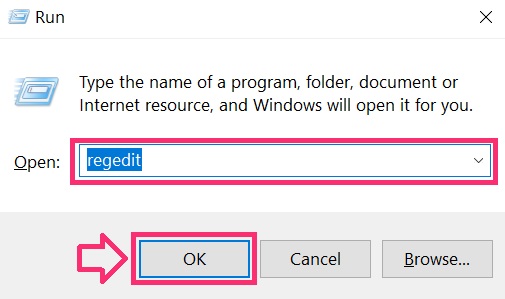

 Tip: To find a virus-created value, you can right-click on it and click "Modify" to see which file it is set to run. If this is the virus file location, remove the value.
Tip: To find a virus-created value, you can right-click on it and click "Modify" to see which file it is set to run. If this is the virus file location, remove the value.
Before starting "Step 4", please boot back into Normal mode, in case you are currently in Safe Mode.
This will enable you to install and use SpyHunter 5 successfully.
Step 4: Boot Your PC In Safe Mode to isolate and remove Trojan-Ransom.NSIS.ONION.air

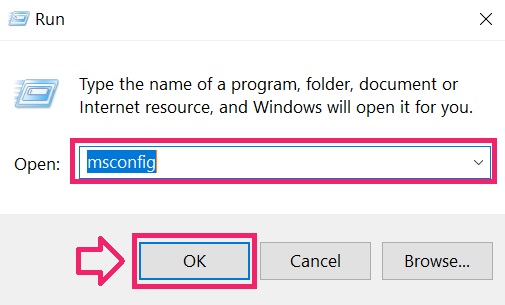
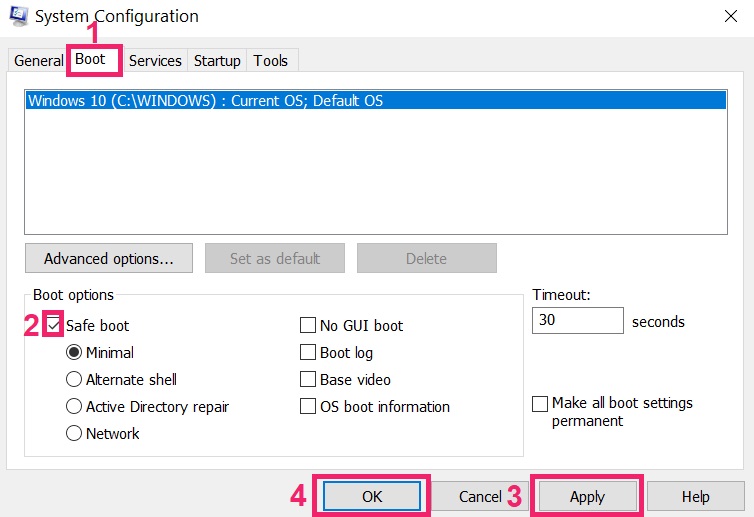
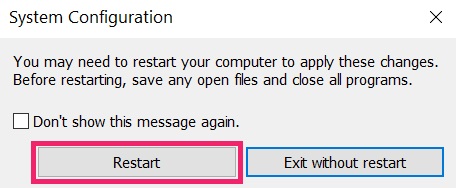
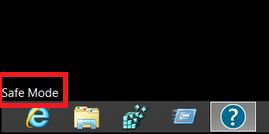
Step 5: Try to Restore Files Encrypted by Trojan-Ransom.NSIS.ONION.air.
Method 1: Use STOP Decrypter by Emsisoft.
Not all variants of this ransomware can be decrypted for free, but we have added the decryptor used by researchers that is often updated with the variants which become eventually decrypted. You can try and decrypt your files using the instructions below, but if they do not work, then unfortunately your variant of the ransomware virus is not decryptable.
Follow the instructions below to use the Emsisoft decrypter and decrypt your files for free. You can download the Emsisoft decryption tool linked here and then follow the steps provided below:
1 Right-click on the decrypter and click on Run as Administrator as shown below:
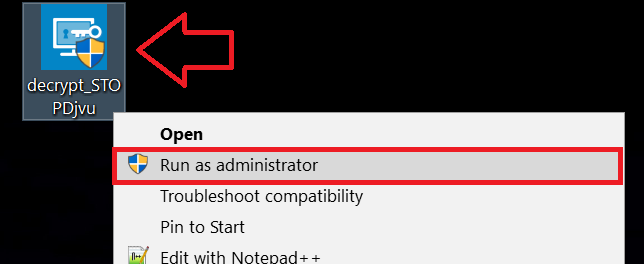
2. Agree with the license terms:
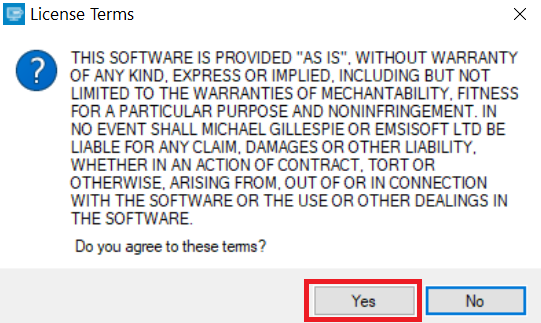
3. Click on "Add Folder" and then add the folders where you want files decrypted as shown underneath:
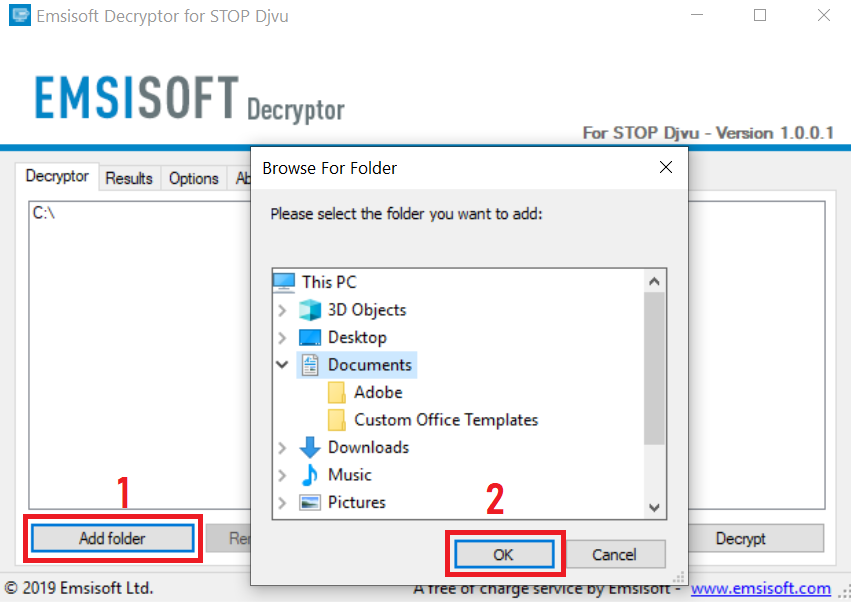
4. Click on "Decrypt" and wait for your files to be decoded.
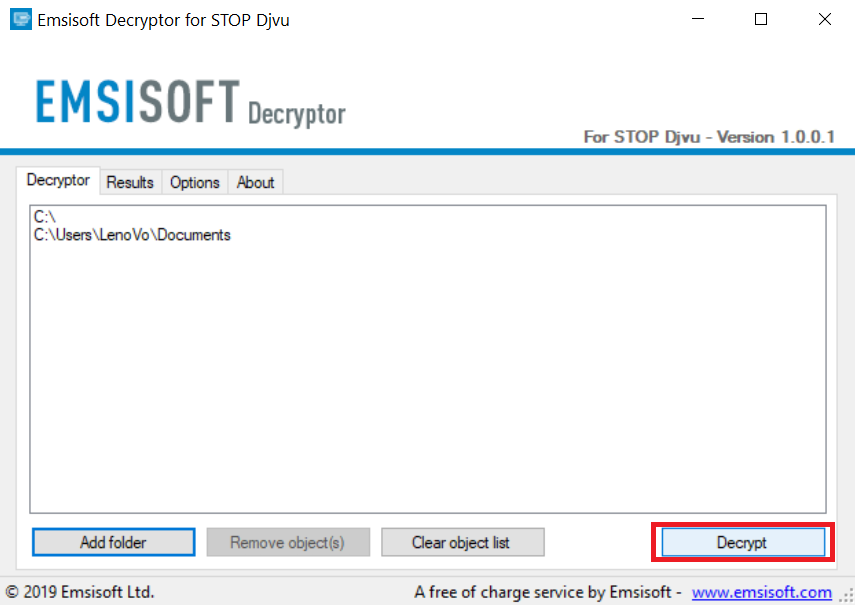
Note: Credit for the decryptor goes to Emsisoft researchers who have made the breakthrough with this virus.
Method 2: Use data recovery software
Ransomware infections and Trojan-Ransom.NSIS.ONION.air aim to encrypt your files using an encryption algorithm which may be very difficult to decrypt. This is why we have suggested a data recovery method that may help you go around direct decryption and try to restore your files. Bear in mind that this method may not be 100% effective but may also help you a little or a lot in different situations.
Simply click on the link and on the website menus on the top, choose Data Recovery - Data Recovery Wizard for Windows or Mac (depending on your OS), and then download and run the tool.
Trojan-Ransom.NSIS.ONION.air-FAQ
What is Trojan-Ransom.NSIS.ONION.air Ransomware?
Trojan-Ransom.NSIS.ONION.air is a ransomware infection - the malicious software that enters your computer silently and blocks either access to the computer itself or encrypt your files.
Many ransomware viruses use sophisticated encryption algorithms to make your files inaccessible. The goal of ransomware infections is to demand that you pay a ransom payment to get access to your files back.
What Does Trojan-Ransom.NSIS.ONION.air Ransomware Do?
Ransomware in general is a malicious software that is designed to block access to your computer or files until a ransom is paid.
Ransomware viruses can also damage your system, corrupt data and delete files, resulting in the permanent loss of important files.
How Does Trojan-Ransom.NSIS.ONION.air Infect?
Via several ways.Trojan-Ransom.NSIS.ONION.air Ransomware infects computers by being sent via phishing emails, containing virus attachment. This attachment is usually masked as an important document, like an invoice, bank document or even a plane ticket and it looks very convincing to users.
Another way you may become a victim of Trojan-Ransom.NSIS.ONION.air is if you download a fake installer, crack or patch from a low reputation website or if you click on a virus link. Many users report getting a ransomware infection by downloading torrents.
How to Open .Trojan-Ransom.NSIS.ONION.air files?
You can't without a decryptor. At this point, the .Trojan-Ransom.NSIS.ONION.air files are encrypted. You can only open them once they are decrypted using a specific decryption key for the particular algorithm.
What to Do If a Decryptor Does Not Work?
Do not panic, and backup the files. If a decryptor did not decrypt your .Trojan-Ransom.NSIS.ONION.air files successfully, then do not despair, because this virus is still new.
Can I Restore ".Trojan-Ransom.NSIS.ONION.air" Files?
Yes, sometimes files can be restored. We have suggested several file recovery methods that could work if you want to restore .Trojan-Ransom.NSIS.ONION.air files.
These methods are in no way 100% guaranteed that you will be able to get your files back. But if you have a backup, your chances of success are much greater.
How To Get Rid of Trojan-Ransom.NSIS.ONION.air Virus?
The safest way and the most efficient one for the removal of this ransomware infection is the use a professional anti-malware program.
It will scan for and locate Trojan-Ransom.NSIS.ONION.air ransomware and then remove it without causing any additional harm to your important .Trojan-Ransom.NSIS.ONION.air files.
Can I Report Ransomware to Authorities?
In case your computer got infected with a ransomware infection, you can report it to the local Police departments. It can help authorities worldwide track and determine the perpetrators behind the virus that has infected your computer.
Below, we have prepared a list with government websites, where you can file a report in case you are a victim of a cybercrime:
Cyber-security authorities, responsible for handling ransomware attack reports in different regions all over the world:
Germany - Offizielles Portal der deutschen Polizei
United States - IC3 Internet Crime Complaint Centre
United Kingdom - Action Fraud Police
France - Ministère de l'Intérieur
Italy - Polizia Di Stato
Spain - Policía Nacional
Netherlands - Politie
Poland - Policja
Portugal - Polícia Judiciária
Greece - Cyber Crime Unit (Hellenic Police)
India - Mumbai Police - CyberCrime Investigation Cell
Australia - Australian High Tech Crime Center
Reports may be responded to in different timeframes, depending on your local authorities.
Can You Stop Ransomware from Encrypting Your Files?
Yes, you can prevent ransomware. The best way to do this is to ensure your computer system is updated with the latest security patches, use a reputable anti-malware program and firewall, backup your important files frequently, and avoid clicking on malicious links or downloading unknown files.
Can Trojan-Ransom.NSIS.ONION.air Ransomware Steal Your Data?
Yes, in most cases ransomware will steal your information. It is a form of malware that steals data from a user's computer, encrypts it, and then demands a ransom in order to decrypt it.
In many cases, the malware authors or attackers will threaten to delete the data or publish it online unless the ransom is paid.
Can Ransomware Infect WiFi?
Yes, ransomware can infect WiFi networks, as malicious actors can use it to gain control of the network, steal confidential data, and lock out users. If a ransomware attack is successful, it could lead to a loss of service and/or data, and in some cases, financial losses.
Should I Pay Ransomware?
No, you should not pay ransomware extortionists. Paying them only encourages criminals and does not guarantee that the files or data will be restored. The better approach is to have a secure backup of important data and be vigilant about security in the first place.
What Happens If I Don't Pay Ransom?
If you don't pay the ransom, the hackers may still have access to your computer, data, or files and may continue to threaten to expose or delete them, or even use them to commit cybercrimes. In some cases, they may even continue to demand additional ransom payments.
Can a Ransomware Attack Be Detected?
Yes, ransomware can be detected. Anti-malware software and other advanced security tools can detect ransomware and alert the user when it is present on a machine.
It is important to stay up-to-date on the latest security measures and to keep security software updated to ensure ransomware can be detected and prevented.
Do Ransomware Criminals Get Caught?
Yes, ransomware criminals do get caught. Law enforcement agencies, such as the FBI, Interpol and others have been successful in tracking down and prosecuting ransomware criminals in the US and other countries. As ransomware threats continue to increase, so does the enforcement activity.
About the Trojan-Ransom.NSIS.ONION.air Research
The content we publish on SensorsTechForum.com, this Trojan-Ransom.NSIS.ONION.air how-to removal guide included, is the outcome of extensive research, hard work and our team’s devotion to help you remove the specific malware and restore your encrypted files.
How did we conduct the research on this ransomware?
Our research is based on an independent investigation. We are in contact with independent security researchers, and as such, we receive daily updates on the latest malware and ransomware definitions.
Furthermore, the research behind the Trojan-Ransom.NSIS.ONION.air ransomware threat is backed with VirusTotal and the NoMoreRansom project.
To better understand the ransomware threat, please refer to the following articles which provide knowledgeable details.
As a site that has been dedicated to providing free removal instructions for ransomware and malware since 2014, SensorsTechForum’s recommendation is to only pay attention to trustworthy sources.
How to recognize trustworthy sources:
- Always check "About Us" web page.
- Profile of the content creator.
- Make sure that real people are behind the site and not fake names and profiles.
- Verify Facebook, LinkedIn and Twitter personal profiles.

